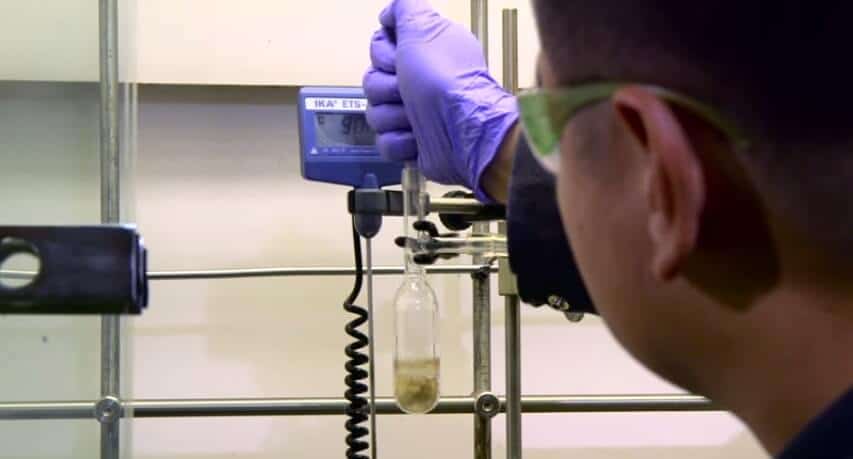A future with hydrogen fuel-cell vehicles and hydrogen-powered smartphones is much closer to reality.
USC researchers have found a clean method of turning greenhouse gas into hydrogen fuel, according to a study published recently in the journal Nature Communications. They believe they are the first to have developed this method.
Researchers had been stuck on a significant challenge holding up the development and commercialization of this technology: generating and storing hydrogen effectively, and without further polluting the environment.
Chemists at the USC Loker Hydrocarbon Research Institute found a way to produce hydrogen while also recycling harmful carbon dioxide through the dehydrogenation of formic acid. And, unlike prior methods, the catalyst that they developed in-house releases hydrogen without involving more pollutants.
Formic acid occurs naturally in the venom of bee and ant stings or through the decay of vegetation. It also can be made by reacting carbon dioxide with hydrogen. So it appeals to scientists as a carrier and storage reservoir for hydrogen.
“Formic acid is important as a hydrogen carrier because we can make it efficiently from carbon dioxide, which is at the center of the global warming problem,” said Travis J. Williams, a lead author of the study and associate professor of chemistry at the USC Dornsife College of Letters, Arts and Sciences.
‘Wicked problems’
Climate change is one of the “wicked problems” that researchers throughout USC — from earth sciences to biology — study and address through innovative research, testing and development. Williams and other chemists at the Loker Hydrocarbon Research Institute are dedicated to finding solutions that will turn carbon dioxide into clean, reusable energy and materials.
In prior studies, scientists sought ways to store hydrogen in formic acid while minimizing toxicity and maximizing energy content, but with limited success. This dehydrogenation method appears to fulfill those objectives, and it is safe and sustainable, Williams said.
“Dehydrogenation is a good way to go if you don’t want to combust the fuel in your engine, for example, in a desktop device,” Williams said.
The chemists developed a new iridium-based catalyst to release the hydrogen that has some significant pluses. It won’t degenerate when exposed to air, making it ideal for vehicles or other devices. Also, the catalyst is reusable – perhaps inexhaustible.
“In fact, we think it might never die. We’ve demonstrated it through 2.2 million turnovers over several months. At that point, the catalyst was still alive, but we were bored with the experiment,” Williams said.
Big money-saver
That would be a big money-saver for anyone who wants to generate and store hydrogen as fuel, he said.
For their study, the researchers specifically used “neat” formic acid.
“Like scotch, ‘neat’ means no added water or solvent,” Williams explained. “This is a big deal, because when you’re releasing energy from a liquid fuel, it’s important to have as little extraneous mass in the fuel as possible. If there is twice as much fuel in the liquid per pound or per gallon, then your car will go twice as far on a single tank.”
Other study co-authors included Jeff Celaje, Zhiyao Lu and Nicholas Terrile – all of the USC Dornsife and the Loker Hydrocarbon Research Institute at USC – as well as Elyse Kedzie and Jonathan Lo of the USC Viterbi School of Engineering.
The study was funded by the National Science Foundation and the Hydrocarbon Research Foundation.


